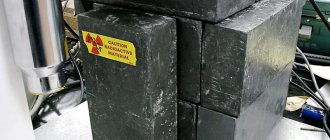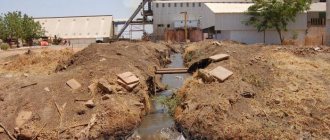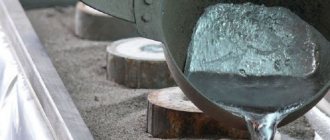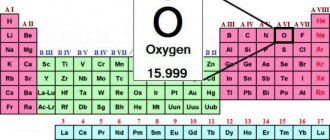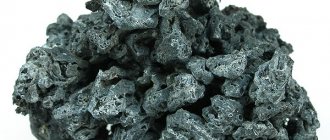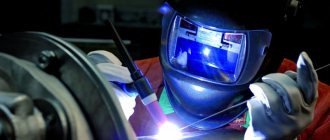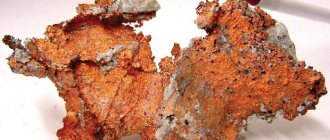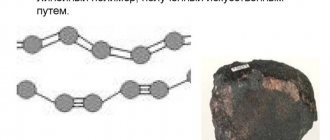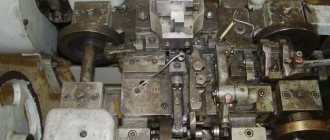General information:
| 100 | General information | |
| 101 | Name | Tungsten |
| 102 | Former name | |
| 103 | Latin name | Wolframium |
| 104 | English name | Tungsten |
| 105 | Symbol | W |
| 106 | Atomic number (number in table) | 74 |
| 107 | Type | Metal |
| 108 | Group | Transition metal |
| 109 | Open | Carl Wilhelm Scheele, Sweden, 1781 (named), Juan José Elhujar Lubize and Fausto de Elhujar, Spain, 1783 |
| 110 | Opening year | 1783 |
| 111 | Appearance, etc. | Hard, refractory, shiny, silver-gray metal |
| 112 | Origin | Natural material |
| 113 | Modifications | |
| 114 | Allotropic modifications | 2 allotropic modifications: — α-tungsten with a cubic body-centered crystal lattice, - β-tungsten with a cubic crystal lattice, called phase A15 |
| 115 | Temperature and other conditions for the transition of allotropic modifications into each other | |
| 116 | Bose-Einstein condensate | |
| 117 | 2D materials | |
| 118 | Content in the atmosphere and air (by mass) | 0 % |
| 119 | Content in the earth's crust (by mass) | 0,00011 % |
| 120 | Content in seas and oceans (by mass) | 1,2·10-8 % |
| 121 | Content in the Universe and space (by mass) | 5,0·10-8 % |
| 122 | Abundance in the Sun (by mass) | 4,0·10-7 % |
| 123 | Content in meteorites (by mass) | 0,000012 % |
| 124 | Content in the human body (by weight) |
History of discovery and study
The metal gets its name from the mineral wolframite. It began to be mined in the 16th century. Back then it was called "wolf's foam." Tungsten was often found in tin ores and interfered with the smelting of this metal. He converted it into a foam of slag.
The first scientific mention of the discovery of a new chemical element appeared in 1781. Then the famous chemist from Sweden Karl Scheele worked with the mineral scheelite. He treated it with nitric acid, during which he obtained a new chemical element with a yellow tint. He called it "heavy stone." Two years later, the Eluard brothers obtained a new metal from the Saxon mineral.
If we compare protection against ionizing radiation from lead or tungsten, the second type of metal wins. The finished protective layer will trap more particles with less weight.
Wolframite
Properties of the tungsten atom:
| 200 | Properties of the atom | |
| 201 | Atomic mass ( molar mass ) | 183.84(1) amu (g/mol) |
| 202 | Electronic configuration | 1s2 2s2 2p6 3s2 3p6 3d10 4s2 4p6 4d10 4f14 5s2 5p6 5d4 6s2 |
| 203 | Electronic shell | K2 L8 M18 N32 O12 P2 Q0 R0 |
| 204 | Atomic radius (calculated) | 193 pm |
| 205 | Empirical atomic radius* | 135 pm |
| 206 | Covalent radius* | 162 pm |
| 207 | Ion radius (crystalline) | W4+ 80 (6) pm, W5+ 76 (6) pm, W6+ 74 (6) pm (in parentheses the coordination number is indicated - a characteristic that determines the number of nearest particles (ions or atoms) in a molecule or crystal) |
| 208 | Van der Waals radius | |
| 209 | Electrons, Protons, Neutrons | 74 electrons, 74 protons, 110 neutrons |
| 210 | Family (block) | d-family element |
| 211 | Period in the periodic table | 6 |
| 212 | Group on the periodic table | 6th group (according to the old classification - a secondary subgroup of the 6th group) |
| 213 | Emission spectrum |
Dependence of the radius of a metal atom on its atomic number
Problem 1082. What explains the closeness of the atomic radii of niobium and tantalum, molybdenum and tungsten, technetium and rhenium?
Solution:
In terms of size, both atoms and ions niobium and tantalum , molybdenum and tungsten , technetium and rhenium are close to each other, so it is advisable to consider their properties as elements simultaneously. The equal volumes of atoms are explained by the fact that the members of period VI - tantalum, tungsten, rhenium - follow in this period almost immediately after the lanthanides, in which not the outer layer, but the third layer from the outside is filled with electrons. This results in what is known as “lanthanide contraction” —increasing numbers of the inner negatively charged electrons are more strongly attracted to the positively charged nucleus. As a result, the radius of the atom not only does not increase with increasing atomic number of the element, but even decreases somewhat.
Structure of chromium, molybdenum and tungsten atoms
Problem 1083. Justify the placement of chromium, molybdenum and tungsten in group VI of the periodic table. How are these elements similar to the elements of the main subgroup?
Solution:
Chromium, molybdenum, and tungsten each contain 6 valence electrons, which are located in the s-orbitals of the outer and d-orbitals of the pre-outer layer. The electronic configuration of these atoms should have the form (n-1)d4ns2 , but taking into account the jump of one electron for Cr and Mo – (n-1)d5ns1. The presence of 6 valence electrons (electrons capable of forming chemical bonds) is the main argument for placing these elements in group VI of the periodic system, and the location of valence electrons on the s-orbitals of the outer and d-orbitals of the pre-outer layer is the argument for placing these elements in the secondary subgroup of this VI groups.
The similarity of these elements with the elements of the main subgroup is manifested in the fact that they all contain 6 valence electrons that can participate in the formation of chemical bonds.
The elements of the main and secondary subgroups are in the highest degree of oxidation, their analogous compounds exhibit significant similarities. Thus, chromium, located in the secondary subgroup of group VI, forms the acidic oxide CrO3, which is similar in properties to sulfur trioxide SO3.
Both of these substances are in a solid state under normal conditions and, when interacting with water, form acids of the composition H2EO4.
This similarity of properties is explained by the fact that in the highest degree of oxidation, the atoms of the elements of the main and secondary subgroups acquire a similar electronic structure. For example, a chromium atom has the electronic structure 1s22s22p63s23p63d54s1 .
When chromium is in the +6 oxidation state (for example, in the oxide CrO3), the six electrons of its atom (five 3d and one 4s electron) together with the valence electrons of neighboring atoms (in the case of CrO3, oxygen atoms) form common electron pairs, carrying out chemical bonds.
The remaining electrons that are not directly involved in the formation of bonds have the configuration 1s22s22p63s23p6 , corresponding to the electronic structure of the noble gas.
Similarly, a sulfur atom in the +6 oxidation state (for example, in sulfur trioxide SO3) has six electrons involved in the formation of covalent bonds, and the configuration of the remaining 1s22s22p6 also corresponds to the electronic structure of a noble gas.
Source: https://buzani.ru/zadachi/khimiya-glinka/1366-atomnye-radiusy-metallov-zadachi-1082-1083
Chemical properties of tungsten:
| 300 | Chemical properties | |
| 301 | Oxidation states | -4, -2, -1, 0, +1, +2, +3, +4, +5, +6 |
| 302 | Valence | II, III, IV, V, VI |
| 303 | Electronegativity | 2.3 (Pauling scale) |
| 304 | Ionization energy (first electron) | 758.76 kJ/mol (7.86403(10) eV) |
| 305 | Electrode potential | W3+ + 3e— → W, Eo = +0.11 V, W6+ + 6e— → W, Eo = +0.68 V |
| 306 | Electron affinity energy of an atom | 78.76(1) kJ/mol (0.81626(8) eV) |
Stamps
Tungsten grades:
- VR is a compound of tungsten and rhenium.
- VT, VI, VL - an additive of lanthanum, thorium, and yttrium oxide is added to the base.
- VRN is a metal without additives. The presence of a small amount of different impurities is allowed.
- VM - various additives are added to the base. The main ones are silica-alkaline, aluminum.
- MV is a compound of molybdenum and tungsten. Plasticity is maintained while strength is increased.
- HF is pure metal without impurities or additives.
- VA - combination of base with aluminum, silicon-alkaline additives.
Incandescent lamps have a sealed glass capsule for a reason. Since tungsten quickly oxidizes in open air, the capsule is filled with an inert gas.
Incandescent lamp
Physical properties of tungsten:
| 400 | Physical properties | |
| 401 | Density* | 19.3 g/cm3 (at 20 °C and other standard conditions , state of matter – solid), 17.6 g/cm3 (at melting point 3422 °C and other standard conditions , state of matter – liquid) |
| 402 | Melting temperature* | 3422 °C (3695 K, 6192 °F) |
| 403 | Boiling temperature* | 5930 °C (6203 K, 10706 °F) |
| 404 | Sublimation temperature | |
| 405 | Decomposition temperature | |
| 406 | Self-ignition temperature of a gas-air mixture | |
| 407 | Specific heat of fusion (enthalpy of fusion ΔHpl)* | 52.31 kJ/mol |
| 408 | Specific heat of evaporation (enthalpy of boiling ΔHboiling)* | 774 kJ/mol |
| 409 | Specific heat capacity at constant pressure | 0.114 J/g K (at 0-1000 °C) |
| 410 | Molar heat capacity | 24.27 J/(K mol) |
| 411 | Molar volume | 9.55 cm³/mol |
| 412 | Thermal conductivity | 173 W/(mK) (at standard conditions ), 162.8 W/(mK) (at 300 K) |
| 413 | Thermal expansion coefficient | 4.5 µm/(MK) (at 25 °C) |
| 414 | Thermal diffusivity coefficient | |
| 415 | Critical temperature | |
| 416 | Critical pressure | |
| 417 | Critical Density | |
| 418 | Triple point | |
| 419 | Vapor pressure (mmHg) | |
| 420 | Vapor pressure (Pa) | |
| 421 | Standard enthalpy of formation ΔH | |
| 422 | Standard Gibbs energy of formation ΔG | |
| 423 | Standard entropy of matter S | |
| 424 | Standard molar heat capacity Cp | |
| 425 | Enthalpy of dissociation ΔHdiss | |
| 426 | The dielectric constant | |
| 427 | Magnetic type | |
| 428 | Curie point | |
| 429 | Volume magnetic susceptibility | |
| 430 | Specific magnetic susceptibility | |
| 431 | Molar magnetic susceptibility | |
| 432 | Electric type | |
| 433 | Electrical conductivity in the solid phase | |
| 434 | Electrical resistivity | |
| 435 | Superconductivity at temperature | |
| 436 | Critical magnetic field of superconductivity destruction | |
| 437 | Prohibited area | |
| 438 | Charge carrier concentration | |
| 439 | Mohs hardness | |
| 440 | Brinell hardness | |
| 441 | Vickers hardness | |
| 442 | Sound speed | |
| 443 | Surface tension | |
| 444 | Dynamic viscosity of gases and liquids | |
| 445 | Explosive concentrations of gas-air mixture, % volume | |
| 446 | Explosive concentrations of a mixture of gas and oxygen, % volume | |
| 446 | Ultimate tensile strength | |
| 447 | Yield strength | |
| 448 | Elongation limit | |
| 449 | Young's modulus | |
| 450 | Shear modulus | |
| 451 | Bulk modulus of elasticity | |
| 452 | Poisson's ratio | |
| 453 | Refractive index |
Application
The main use of tungsten is as the basis of refractory materials in metallurgy.
Tungsten metal
filament
- The refractoriness and ductility of tungsten make it indispensable for incandescent filaments in lighting fixtures, as well as in picture tubes and other vacuum tubes.
- Due to its high density, tungsten is the basis of heavy alloys that are used for counterweights, armor-piercing cores of sub-caliber and swept-fin projectiles of artillery guns, cores of armor-piercing bullets and high-speed gyroscope rotors to stabilize the flight of ballistic missiles (up to 180 thousand rpm).
- Tungsten is used as electrodes for argon-arc welding.
- Tungsten alloys, due to their high melting point, are produced by powder metallurgy. Alloys containing tungsten are characterized by heat resistance, acid resistance, hardness and abrasion resistance. They are used to make surgical instruments (amaloy alloy), tank armor, shells of torpedoes and shells, the most important parts of aircraft and engines, and containers for storing radioactive substances. Tungsten is an important component of the best grades of tool steels.
- Tungsten is used in high-temperature vacuum resistance furnaces as heating elements. An alloy of tungsten and rhenium is used in such furnaces as a thermocouple.
- The high density of tungsten makes it suitable for protection against ionizing radiation. Despite its higher density compared to traditional and cheaper lead, tungsten protection turns out to be less heavy with equal protective properties or more effective with equal weight. Due to the refractoriness and hardness of tungsten, which makes it difficult to process, in such cases more ductile tungsten alloys with the addition of nickel, iron, copper, etc., or a suspension of powdered tungsten (or its compounds) in a polymer base are used.
Tungsten connections
- For mechanical processing of metals and non-metallic structural materials in mechanical engineering (turning, milling, planing, chiselling), well drilling, and in the mining industry, hard alloys and composite materials based on tungsten carbide are widely used (for example, pobedit, consisting of WC crystals in a cobalt matrix; grades widely used in Russia - VK2, VK4, VK6, VK8, VK15, VK25, T5K10, T15K6, T30K4), as well as mixtures of tungsten carbide, titanium carbide, tantalum carbide (TT grades for particularly difficult processing conditions, for example, chiselling and planing forgings made of heat-resistant steels and rotary hammer drilling of strong materials). Widely used as an alloying element (often together with molybdenum) in steels and iron-based alloys. High-alloy steel, classified as “high-speed”, with a marking starting with the letter P, almost always contains tungsten.
- Tungsten sulfide WS2 is used as a high-temperature (up to 500 °C) lubricant.
- Some tungsten compounds are used as catalysts and pigments.
- Tungstate single crystals (lead, cadmium, calcium tungstates) are used as scintillation detectors of X-rays and other ionizing radiation in nuclear physics and nuclear medicine.
- Tungsten ditelluride WTe2 is used to convert thermal energy into electrical energy (thermo-emf about 57 μV/K).
Tungsten crystal lattice:
| 500 | Crystal cell | |
| 511 | Crystal grid #1 | α-tungsten |
| 512 | Lattice structure | Cubic body-centered |
| 513 | Lattice parameters | 3.160 Å |
| 514 | c/a ratio | |
| 515 | Debye temperature | 310K |
| 516 | Name of space symmetry group | Im_ 3m |
| 517 | Symmetry space group number | 229 |
Industrial production
The production of tungsten by industrial enterprises begins with the extraction of ore and its delivery to production. The next stage is the separation of trioxide from the consumable material. It then goes through a reduction process to produce purified metal powder. The recovery procedure is carried out under the influence of hydrogen. In this case, the raw material is heated to 700°C. The finished powder is pressed and sintered at a temperature of 1300°C in a protective atmosphere of hydrogen.

